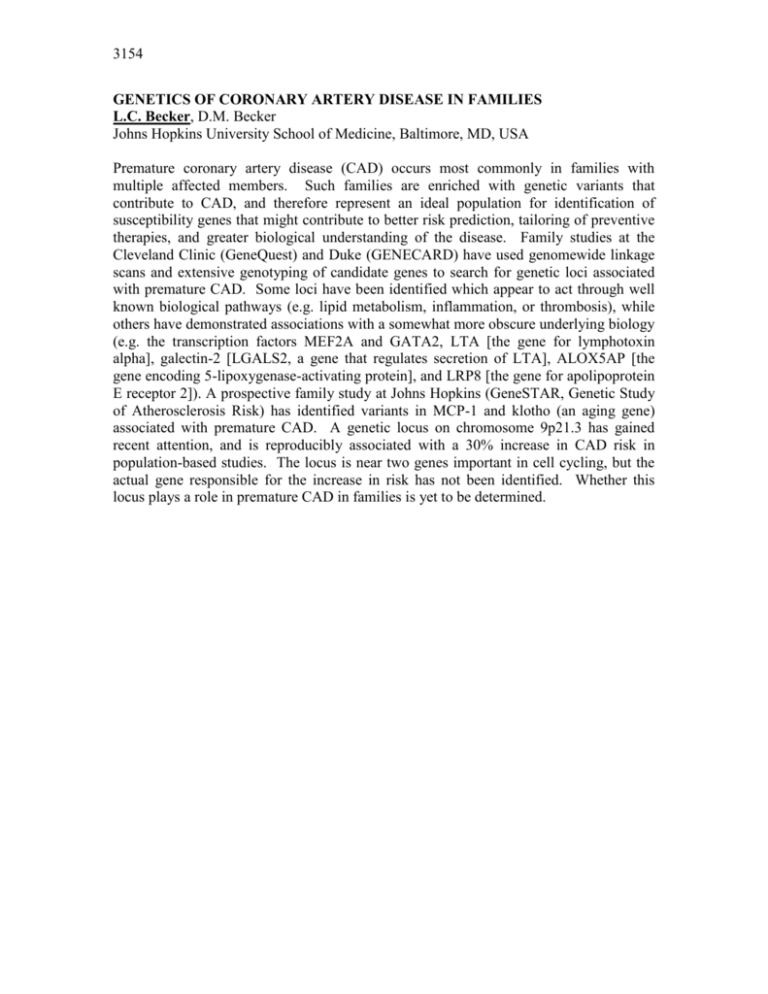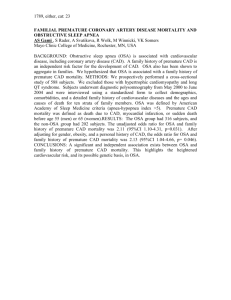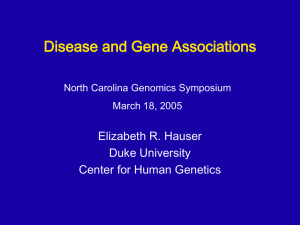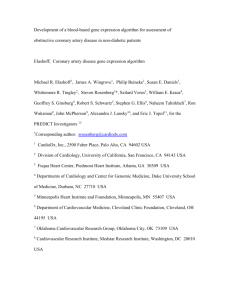genetics of coronary artery disease in families
advertisement

3154 GENETICS OF CORONARY ARTERY DISEASE IN FAMILIES L.C. Becker, D.M. Becker Johns Hopkins University School of Medicine, Baltimore, MD, USA Premature coronary artery disease (CAD) occurs most commonly in families with multiple affected members. Such families are enriched with genetic variants that contribute to CAD, and therefore represent an ideal population for identification of susceptibility genes that might contribute to better risk prediction, tailoring of preventive therapies, and greater biological understanding of the disease. Family studies at the Cleveland Clinic (GeneQuest) and Duke (GENECARD) have used genomewide linkage scans and extensive genotyping of candidate genes to search for genetic loci associated with premature CAD. Some loci have been identified which appear to act through well known biological pathways (e.g. lipid metabolism, inflammation, or thrombosis), while others have demonstrated associations with a somewhat more obscure underlying biology (e.g. the transcription factors MEF2A and GATA2, LTA [the gene for lymphotoxin alpha], galectin-2 [LGALS2, a gene that regulates secretion of LTA], ALOX5AP [the gene encoding 5-lipoxygenase-activating protein], and LRP8 [the gene for apolipoprotein E receptor 2]). A prospective family study at Johns Hopkins (GeneSTAR, Genetic Study of Atherosclerosis Risk) has identified variants in MCP-1 and klotho (an aging gene) associated with premature CAD. A genetic locus on chromosome 9p21.3 has gained recent attention, and is reproducibly associated with a 30% increase in CAD risk in population-based studies. The locus is near two genes important in cell cycling, but the actual gene responsible for the increase in risk has not been identified. Whether this locus plays a role in premature CAD in families is yet to be determined.










